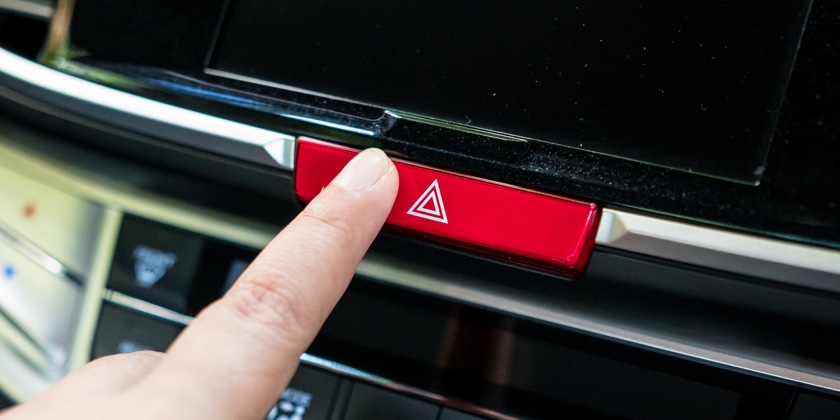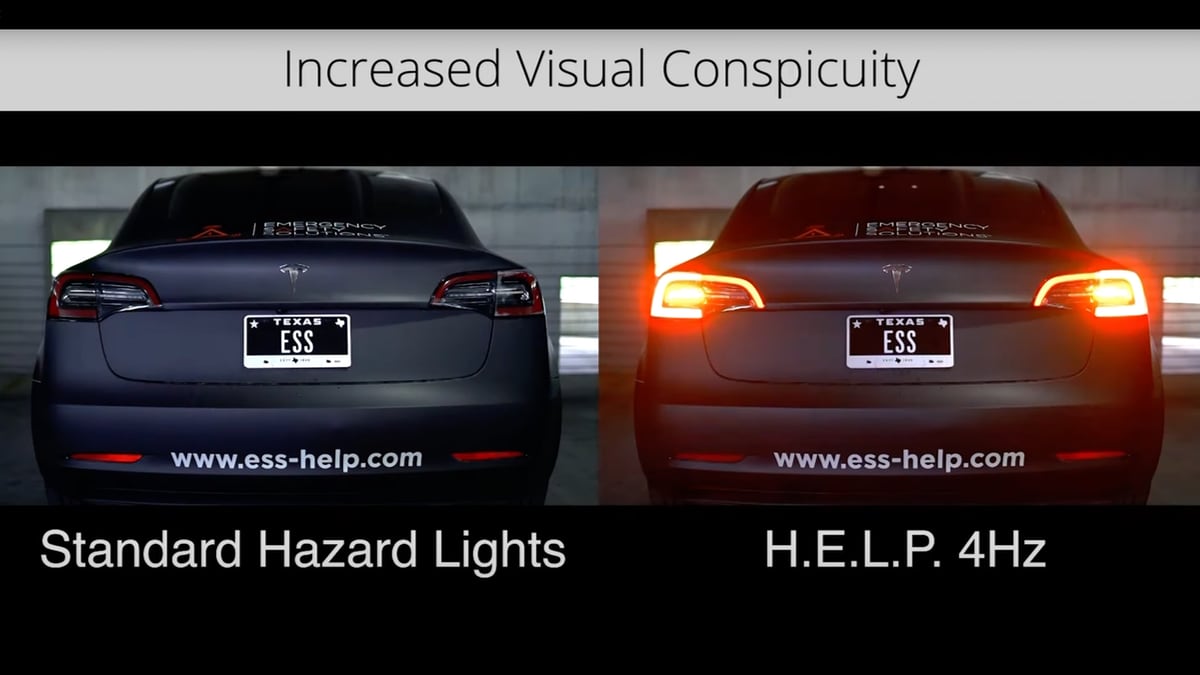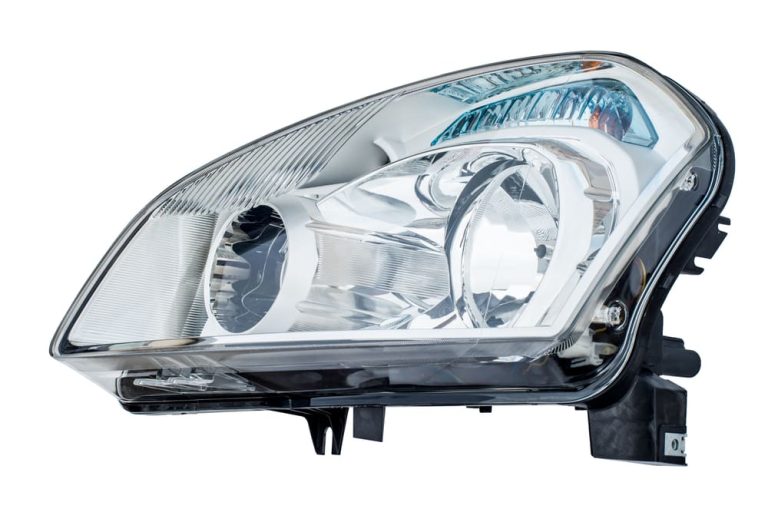Hazard Lights on a Car: Essential Safety Tips
Have you ever found yourself in a tricky situation on the road and wondered if those blinking lights on your dashboard could be the key to safety? Understanding the role of hazard lights on a car is more important than you might think.
They are not just an accessory; they are a vital tool for keeping you and other drivers safe. You’ll discover when and how to use them effectively, ensuring that you are prepared for any unexpected road conditions. Imagine being able to communicate instantly with other drivers, signaling that something is not quite right with just a flick of a switch.
By the end of this read, you’ll feel more confident and informed, ready to handle whatever the road throws your way. Don’t miss out on this opportunity to enhance your driving safety knowledge!

Credit: www.mrtyre.com
Hazard Lights on a Car
Importance Of Hazard Lights
Hazard lights are more than just a flashing signal on your car. They are a vital safety feature that can prevent accidents and communicate critical information to other drivers. Understanding their importance can be the difference between a safe journey and a roadside mishap. Let’s dive deeper into why hazard lights are crucial for every driver.
Why Hazard Lights Matter
Imagine you’re driving down the highway and your car suddenly breaks down. Activating your hazard lights instantly alerts other drivers to your situation. This simple action can help prevent collisions and keep you safe until help arrives.
Hazard lights can be a lifesaver in poor weather conditions. They make your vehicle visible to others during heavy rain or fog. Visibility is often compromised in such conditions, and hazard lights ensure you are noticed.
Have you ever been in a situation where traffic suddenly comes to a standstill? Using your hazard lights can signal to the vehicles behind you that there’s an issue ahead. This can reduce the chances of rear-end accidents.
Use hazard lights when your vehicle is stationary on a busy road. This signals other drivers to maneuver carefully around you. It’s an essential tool for safety.
In case of a medical emergency, hazard lights can be crucial. They alert others that you need immediate assistance or are rushing to help someone in need.
Sometimes, hazard lights can be used during a funeral procession. This shows respect and alerts others to maintain a dignified space around the procession.
Common Misconceptions
Some believe hazard lights are only for emergencies. However, they can also be used for non-emergency situations like escorting a slow-moving vehicle.
Others might think they can use hazard lights while driving normally in bad weather. This can be confusing and should be avoided. Use them only when your vehicle is stationary or in an emergency.
It’s not uncommon to see cars using hazard lights in parking lots. This is generally unnecessary and can confuse other drivers about your intentions.
Personal Experience
Once, I was driving late at night when my tire blew out. I quickly turned on my hazard lights. This not only signaled my distress to other drivers but also attracted the attention of a passing tow truck. The driver stopped and helped me change the tire, getting me back on the road safely.
Have you ever found yourself in a similar situation? Hazard lights can be your silent communicator, ensuring your safety and swift assistance.
Think about the last time you saw hazard lights on the road. Did it prompt you to slow down or change lanes? These small signals have a big impact on road safety.
In conclusion, hazard lights are indispensable. They ensure your safety and communicate your situation to others. Next time you’re in a tricky situation, remember to use them wisely.

Credit: www.firestonecompleteautocare.com
When To Use Hazard Lights
Knowing when to use hazard lights on your car can be a game-changer in ensuring road safety. These blinking lights, often overlooked, serve a crucial role in communicating with other drivers. But are you using them effectively? Let’s dive into the situations where hazard lights can make all the difference.
When You’re Stopped On The Side Of The Road
Imagine you’re driving on a highway and suddenly your car breaks down. What do you do? Using your hazard lights alerts other drivers that your car is stationary and can prevent accidents. It’s a simple action that speaks volumes about your road etiquette.
In Severe Weather Conditions
Driving through heavy rain or fog can be daunting. Visibility is reduced, and accidents can occur more easily. Turning on your hazard lights lets other drivers know to proceed with caution. It’s a small gesture that enhances safety for everyone on the road.
During Emergency Situations
Sometimes emergencies occur, and you need to make quick decisions. Whether it’s an accident or a health issue, using hazard lights can signal distress and prompt others to offer assistance. Have you ever thought about how a simple light can connect strangers in times of need?
In A Funeral Procession
Participating in a funeral procession is a solemn occasion. Using hazard lights identifies your vehicle as part of the procession, ensuring other drivers give you the space you need. It’s an act of respect and coordination amidst the hustle of daily traffic.
While Parking In A No-parking Zone Temporarily
Sometimes you need to make a quick stop in a no-parking zone, perhaps to drop off a passenger or load luggage. Using hazard lights can signal your temporary presence, reducing confusion and annoyance. Do you find this tactic handy when you’re pressed for time?
When You’re Towing Another Vehicle
Towing a vehicle can be tricky. Hazard lights can alert other drivers to maintain a safe distance and approach with caution. It’s a proactive step that ensures smoother interactions on the road.
Think about the last time you saw someone using hazard lights effectively. How did it change your perception of the situation? By understanding when to use these lights, you contribute to a safer driving environment for all.
Common Misuses Of Hazard Lights
Many drivers mistakenly use hazard lights during rain or fog, causing confusion on the road. These lights are intended for emergencies, such as breakdowns, not adverse weather conditions. Misusing them can lead to unsafe driving situations and miscommunication among motorists.
Understanding how and when to use hazard lights can be a bit tricky, especially with so many drivers using them inappropriately. Hazard lights, also known as emergency flashers, are designed to alert other drivers of a temporary problem or a potential danger on the road. However, many drivers misuse them, leading to confusion and sometimes even accidents. Let’s explore some common misuses of hazard lights to help ensure you’re using them correctly and safely.
1. Using Hazard Lights While Double Parking
You might think it’s okay to use hazard lights when double parking for a quick errand. But this can signal to others that your vehicle is in distress. Instead, find a legal parking spot to avoid unnecessary confusion and potential fines.
2. Turning Them On During Bad Weather
It might seem like a good idea to turn on your hazard lights during heavy rain or fog for better visibility. However, this can actually make it difficult for other drivers to gauge your movements. Use your regular headlights and reduce your speed instead.
3. Using Hazard Lights In A Funeral Procession
Some drivers think it’s respectful to use hazard lights in a funeral procession. This can actually disrupt traffic flow and confuse other drivers. It’s better to use your low-beam headlights or follow the procession guidelines provided by the funeral director.
4. Activating Them In Moving Traffic
Using hazard lights while your car is in motion can be misleading. It might suggest your car is about to stop unexpectedly, causing other drivers to react unpredictably. Reserve hazard lights for stationary situations where your car is an obstacle.
5. Using Them To Park In No-parking Zones
You might have seen drivers using hazard lights to justify parking in no-parking zones. This is illegal and unsafe as it can disrupt traffic and cause congestion. Always adhere to parking regulations to keep roads safe for everyone.
6. Signaling To Other Drivers
Some drivers use hazard lights to signal a thank you or to allow others to merge. This can confuse other drivers who are unsure of your intentions. Stick to traditional hand signals or a simple wave instead. Reflect on your driving habits. Are you guilty of any of these common misuses? Understanding the proper use of hazard lights can make the roads safer for you and everyone else. Share your experiences in the comments below and let’s start a conversation on safe driving practices.

Credit: www.youtube.com
Legal Regulations For Hazard Lights
Hazard lights are important for signaling emergencies on the road. Understanding their legal regulations is crucial. Different regions have varied laws about their use. It’s essential to know these rules to avoid fines or penalties.
Different Laws By Country
Countries have unique laws for hazard lights. In the US, rules vary by state. Some states allow hazard lights while driving in emergencies. Others restrict their use to stationary vehicles. European regulations differ widely. UK laws permit hazard lights only when stopped. Germany allows usage in specific situations like breakdowns.
State-specific Regulations
States in the US have specific regulations. California allows hazard lights in severe weather conditions. New York restricts use to parked vehicles. Texas permits hazard lights on moving vehicles in emergencies. Always check local laws for accurate information.
Fines And Penalties
Misusing hazard lights can lead to fines. Penalties vary by region. Using hazard lights unlawfully might result in a ticket. It’s important to follow guidelines to avoid legal issues.
Exceptions To Rules
Some areas have exceptions for hazard light usage. School buses often have special allowances. Emergency vehicles can use hazard lights freely. Understanding these exceptions helps in navigating legal landscapes.
Importance Of Compliance
Compliance with hazard light regulations is vital. It ensures safety and avoids legal troubles. Proper use signals distress, ensuring help arrives quickly. Always adhere to local laws for safe driving.
Maintenance And Troubleshooting
Hazard lights on a car alert other drivers of potential danger. Regular checks ensure they function correctly during emergencies. Addressing issues promptly helps maintain road safety.
Maintaining your car’s hazard lights is crucial for safety on the road. These lights signal distress or emergency, making them essential for alerting other drivers to potential issues. Regular maintenance and troubleshooting ensure they’re always ready when you need them most.
Check Bulbs Regularly
Inspect the hazard light bulbs frequently to ensure they are functioning correctly. A simple visual check can reveal if a bulb is burnt out or dim. Replace any faulty bulbs promptly to maintain visibility.
Test The Switch
Engage the hazard light switch periodically to verify its responsiveness. If you notice any delay or failure to activate, the switch might be faulty. Consider consulting a professional mechanic if the issue persists.
Inspect Wiring And Connections
Faulty wiring can cause your hazard lights to malfunction. Check the wires and connections for any signs of wear or corrosion. A loose or damaged wire can interrupt the electrical flow, so ensure everything is secure and intact.
Battery Health
A weak car battery can affect the performance of your hazard lights. If your lights are dim or flicker, it could be a sign of battery trouble. Keep your battery charged and replace it when necessary to ensure consistent light performance.
Use A Multimeter
A multimeter can help diagnose electrical issues with your hazard lights. It measures voltage and can identify problems within the circuit. If you’re comfortable with basic tools, this can be a handy way to troubleshoot.
Consult Your Vehicle Manual
Your car’s manual is a valuable resource for understanding its electrical system. It offers guidance specific to your vehicle model, including troubleshooting steps. If you’re ever unsure, refer to the manual before making any changes.
Seek Professional Help
Sometimes, the problem might be beyond a simple fix. If you’re unable to resolve the issue, don’t hesitate to seek professional assistance. A certified mechanic can offer expert advice and ensure your hazard lights are in top condition. Maintaining your hazard lights isn’t just about fixing problems—it’s about preventing them. How often do you check yours? Are you confident they’re ready for any emergency? Taking these steps can save you a lot of hassle and keep you safe on the road.
Frequently Asked Questions
What Are Hazard Lights Used For On A Car?
Hazard lights warn others of your stopped or slow-moving vehicle. They signal emergencies or alert drivers.
Can I Use Hazard Lights While Driving?
Using hazard lights while driving is not recommended. They can confuse other drivers. Use them when stationary.
How Long Can I Leave Hazard Lights On?
Hazard lights can drain your battery. Use them only as needed. Turn off when safe.
Conclusion
Hazard lights play a key role in car safety. They alert others during emergencies. Use them wisely to avoid confusion. Remember, they should signal danger or breakdowns. Never use them while driving normally. Proper use helps prevent accidents. Understanding their purpose is crucial for road safety.
Educate others about their importance. This small effort can save lives. Stay vigilant and keep safety first. Always be aware of your surroundings. Your actions on the road matter. Drive safely and responsibly. Make sure your hazard lights work properly.
Related Article



